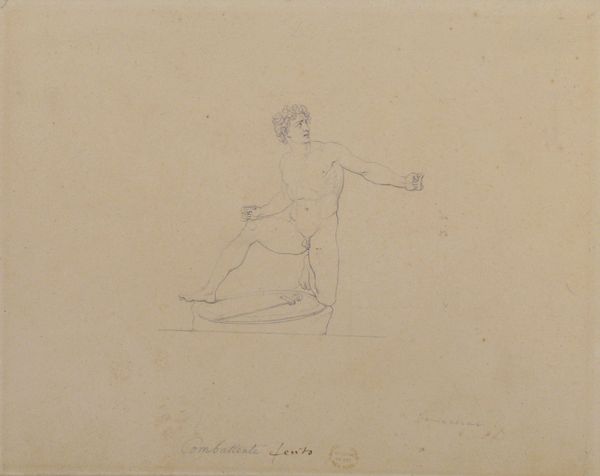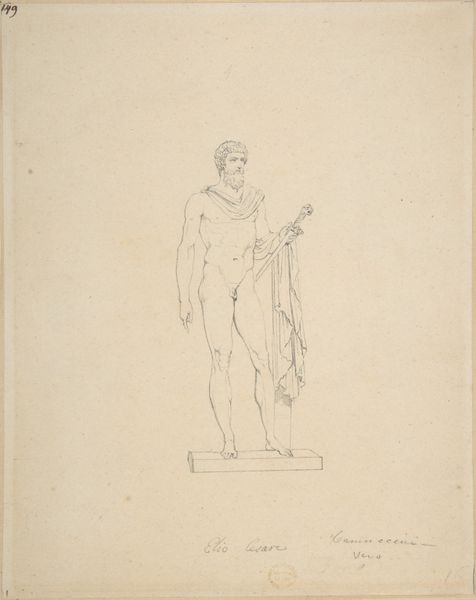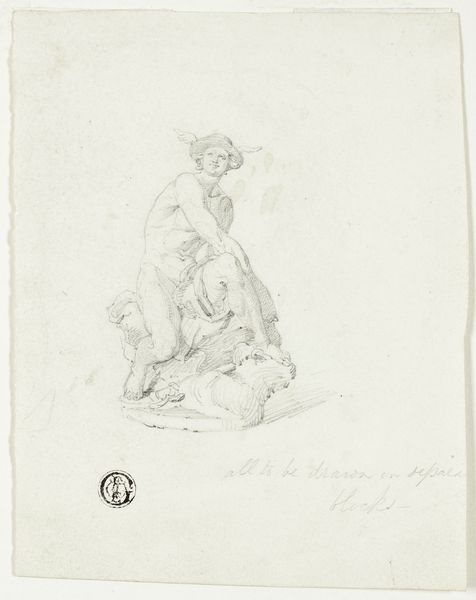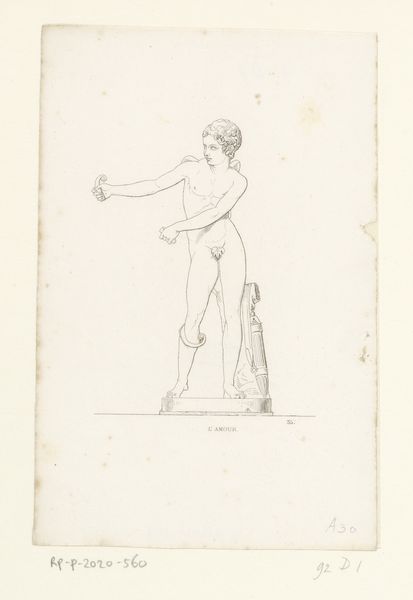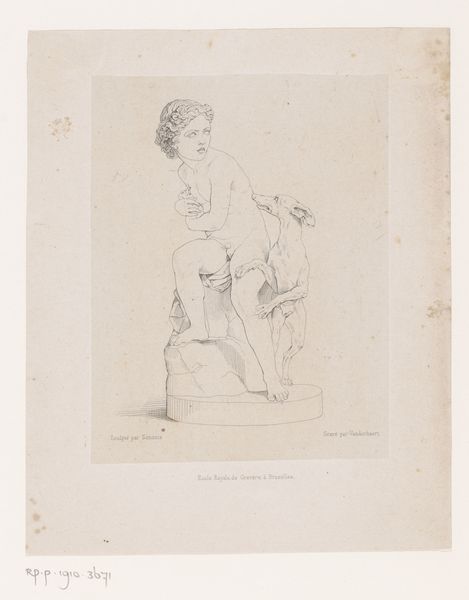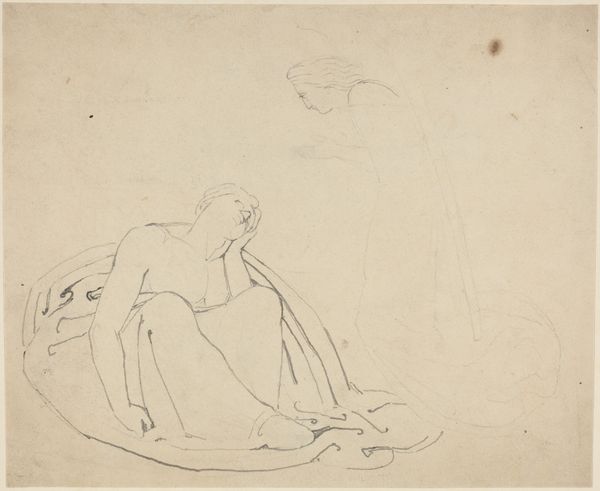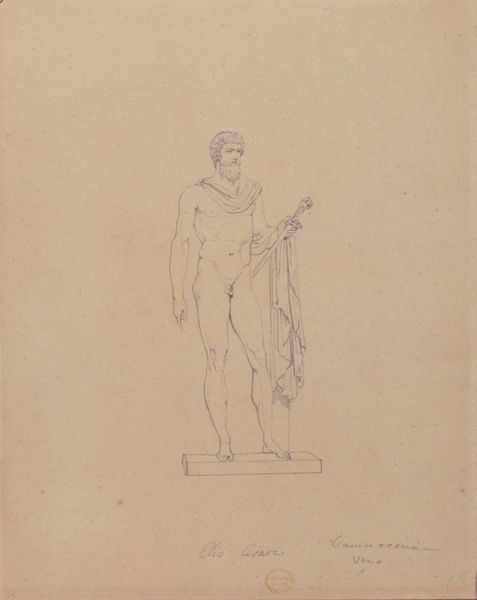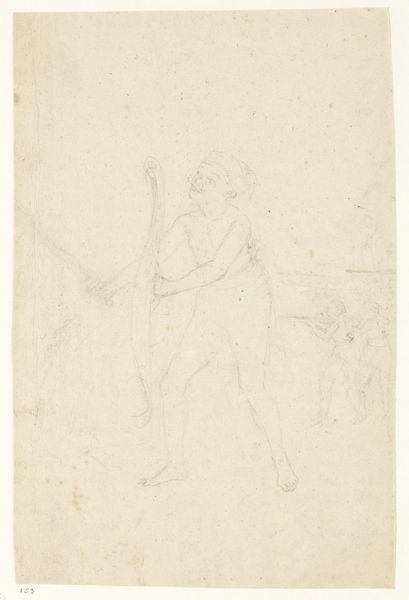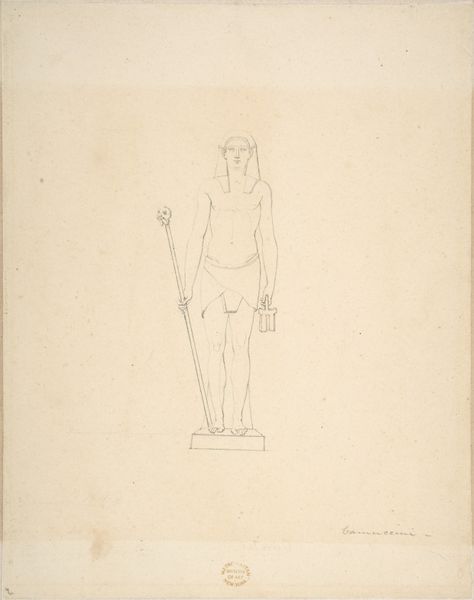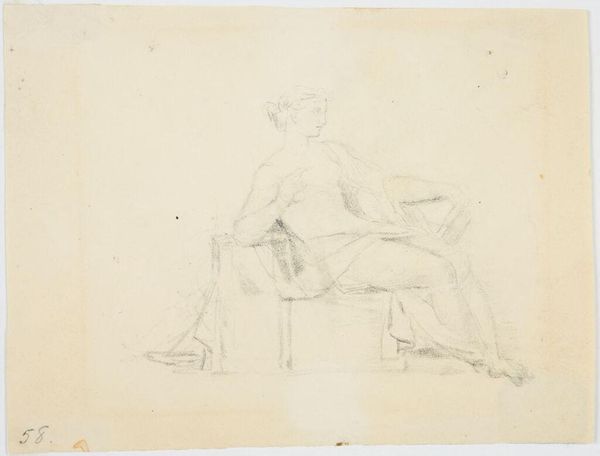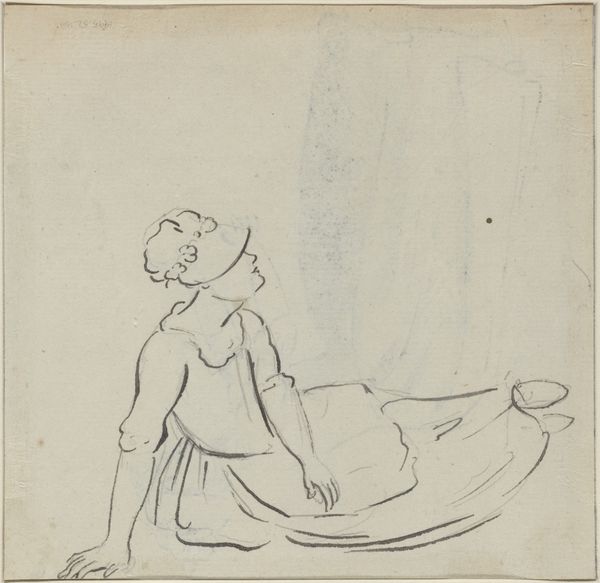
drawing, print, pencil
#
drawing
#
neoclacissism
# print
#
pencil sketch
#
etching
#
figuration
#
pencil
#
academic-art
#
male-nude
#
realism
Dimensions: 7 5/8 x 9 1/2in. (19.4 x 24.1cm)
Copyright: Public Domain
Curator: Here we have Vincenzo Camuccini's "Kneeling Gladiator," a pencil drawing, possibly also an etching, completed sometime between 1771 and 1844. Editor: There's a remarkable delicacy to it. The linework is so faint, almost tentative, yet it conveys this sense of latent power. Curator: Indeed. Camuccini's mastery of line and form is evident, characteristic of the Neoclassical pursuit of ideal beauty and the precise rendering of the human form. Note the figure's contrapposto, the play of tension and relaxation in the pose. Editor: What interests me is less the ideal and more the reality, or perhaps the attempt to mask a violent process behind an aesthetic ideal. The meticulous draftsmanship strikes me as being in dialogue with the realities of the work and its social implications during this historical moment, and specifically of this subject in gladiator combat. Who was profiting off of the labour in service of a bloody, inhumane spectacle? Curator: It is hard to overlook those implications, I agree. The controlled and refined style—that emphasis on line, the idealized musculature, even the subdued tonality of the pencil—speak to Neoclassicism’s aspiration toward order and reason, contrasting with, even perhaps containing, the raw brutality that underpinned gladiatorial contests. Think of the philosophical framework artists like Camuccini inhabited; the classical ideals served to communicate moral virtue. Editor: Yet, can the artist ever really sanitize this figure from the grim, and gritty elements from which this figure stems, or should that not be our priority anyway when viewing art. Pencil as the core material has been used for much of history. Who had access to that pencil and what choices did Camuccini have available? Those kinds of questions ground it for me in its production and reception in a way that emphasizes art's inextricable links to material culture and power structures. Curator: A crucial connection. By focusing on the form, we appreciate the aesthetic dialogue within Neoclassicism; whereas by addressing the material context, you reveal the broader social and ethical complexities within that apparent formality. Editor: Precisely. We expose not just the ideal, but the ideology. I suppose it encourages me to ask, is it ever truly possible to strip art of any connection to labour or society? The image remains suspended between aestheticism and history, between idealization and reality.
Comments
No comments
Be the first to comment and join the conversation on the ultimate creative platform.
